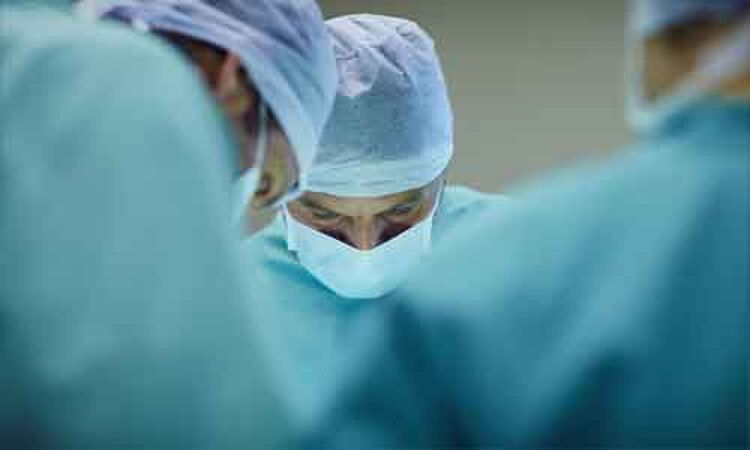- Home
- Medical news & Guidelines
- Anesthesiology
- Cardiology and CTVS
- Critical Care
- Dentistry
- Dermatology
- Diabetes and Endocrinology
- ENT
- Gastroenterology
- Medicine
- Nephrology
- Neurology
- Obstretics-Gynaecology
- Oncology
- Ophthalmology
- Orthopaedics
- Pediatrics-Neonatology
- Psychiatry
- Pulmonology
- Radiology
- Surgery
- Urology
- Laboratory Medicine
- Diet
- Nursing
- Paramedical
- Physiotherapy
- Health news
- Fact Check
- Bone Health Fact Check
- Brain Health Fact Check
- Cancer Related Fact Check
- Child Care Fact Check
- Dental and oral health fact check
- Diabetes and metabolic health fact check
- Diet and Nutrition Fact Check
- Eye and ENT Care Fact Check
- Fitness fact check
- Gut health fact check
- Heart health fact check
- Kidney health fact check
- Medical education fact check
- Men's health fact check
- Respiratory fact check
- Skin and hair care fact check
- Vaccine and Immunization fact check
- Women's health fact check
- AYUSH
- State News
- Andaman and Nicobar Islands
- Andhra Pradesh
- Arunachal Pradesh
- Assam
- Bihar
- Chandigarh
- Chattisgarh
- Dadra and Nagar Haveli
- Daman and Diu
- Delhi
- Goa
- Gujarat
- Haryana
- Himachal Pradesh
- Jammu & Kashmir
- Jharkhand
- Karnataka
- Kerala
- Ladakh
- Lakshadweep
- Madhya Pradesh
- Maharashtra
- Manipur
- Meghalaya
- Mizoram
- Nagaland
- Odisha
- Puducherry
- Punjab
- Rajasthan
- Sikkim
- Tamil Nadu
- Telangana
- Tripura
- Uttar Pradesh
- Uttrakhand
- West Bengal
- Medical Education
- Industry
Nerve stimulation reduces pain and opioid use after orthopedic surgery

A technique called percutaneous peripheral nerve stimulation yields "impressive" reductions in pain scores and opioid use during the first week after common orthopedic surgery procedures, concludes a randomized clinical trial published Online First in Anesthesiology, the official peer-reviewed journal of the American Society of Anesthesiologists (ASA), today.
The benefits of postoperative nerve stimulation were "much greater than what we had anticipated, concurrently reducing pain scores by more than 50 percent and opioid consumption by 80 percent," according to the randomized trial report by Brian M. Ilfeld, M.D., MS, and colleagues. With further study, they believe that peripheral nerve stimulation could be a safe, effective, opioid reducing, non-drug adjunct for pain management after surgery.
In percutaneous peripheral nerve stimulation, a tiny electrical lead (insulated wire) is placed alongside a nerve and connected to a battery-powered pulse generator. The generator delivers mild electrical stimulation to the nerve, interrupting pain transmission. Although this "neuromodulation" technique has been widely used for patients with chronic pain, the new study is the first randomized, controlled trial to evaluate its use for acute pain after surgery.
The study enrolled 65 patients undergoing common outpatient joint surgery, such as bunion surgery in the foot or rotator cuff repair in the shoulder. All patients underwent lead placement near the nerve(s) serving the surgical joint. Half of the patients were randomly assigned to active electrical stimulation, adjusted to achieve the desired sensory change - sometimes described as feeling like a "pleasant massage." The remaining patients received an inactive "sham" treatment, with a pulse generator that appeared to function normally, but did not deliver any electrical current. After one week, pain scores and opioid use were compared between groups. Evaluations were performed in "double-masked" fashion: neither the researchers nor the patients knew which treatment the patient was receiving.
The results showed significantly lower pain ratings in the active nerve stimulation group. Mean pain score (on a 0 to 10 scale) was 1.1 in patients receiving active treatment, compared to 3.1 in the sham group.
Active nerve stimulation was also associated with a much lower use of opioids to control postoperative pain. Median opioid dose (oral morphine equivalents) for the entire first week after surgery was 5 milligrams in the active treatment group, compared to 48 milligrams in the sham group. That's an important benefit due to the possible adverse effects of postoperative opioids, such as nausea, constipation, sedation, and respiratory depression.
Although the trial was designed as a pilot study, the results "stand on their own and indicate that percutaneous peripheral nerve stimulation is highly effective for acute pain," Dr. Ilfeld and coauthors wrote. They outlined plans for a subsequent study that is currently enrolling a far larger number of patients and will include a more complete assessment of the treatment effect across patient subgroups.
https://pubs.asahq.org/anesthesiology/article/doi/10.1097/ALN.0000000000003776
Hina Zahid Joined Medical Dialogue in 2017 with a passion to work as a Reporter. She coordinates with various national and international journals and association and covers all the stories related to Medical guidelines, Medical Journals, rare medical surgeries as well as all the updates in the medical field. Email: editorial@medicaldialogues.in. Contact no. 011-43720751
Dr Kamal Kant Kohli-MBBS, DTCD- a chest specialist with more than 30 years of practice and a flair for writing clinical articles, Dr Kamal Kant Kohli joined Medical Dialogues as a Chief Editor of Medical News. Besides writing articles, as an editor, he proofreads and verifies all the medical content published on Medical Dialogues including those coming from journals, studies,medical conferences,guidelines etc. Email: drkohli@medicaldialogues.in. Contact no. 011-43720751


